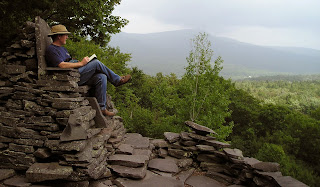 In addition to the usual bookstore signings, I’ll be visiting eight of the top art schools in the U.S.A. during the upcoming book tour for Dinotopia: Journey to Chandara.
In addition to the usual bookstore signings, I’ll be visiting eight of the top art schools in the U.S.A. during the upcoming book tour for Dinotopia: Journey to Chandara.At each school, I’ll meet with students and faculty to find out about their various programs for teaching painting, illustration, and comic art. At each one I’ll give a presentation showing my own method for making realistic pictures of imaginary scenes. The name of the presentation is “An Inconvenient Technique.”
The art schools include:
Hartford Art School—October 9
Ringling College of Art and Design—Oct. 17
Rhode Island School of Design—Oct. 25
SUNY Fredonia—Nov. 12
Syracuse University—Nov. 14
Art Center College of Design—Nov. 28
Academy of Art University—December 4
San Jose State University School of Art and Design—Dec. 6
Unfortunately, most of these events can’t be open to the public. But don’t worry: over the next couple of weeks on this blog I’ll preview some of the material from my presentation. If you’re a working artist, perhaps you might find a few tips that you can use, and I hope you’ll add a comment describing methods you’ve developed.
And if you stay tuned to this blog, you’ll get an inside look at each of these famous art schools. If you’re a young artist thinking of going to art school, you’ll get an idea of what the institutions have in common—and how they’re different.
If you’re not an artist at all, but just enjoy the Dinotopia books, you’ll get a better idea of what the cooks are doing in the kitchen.





































